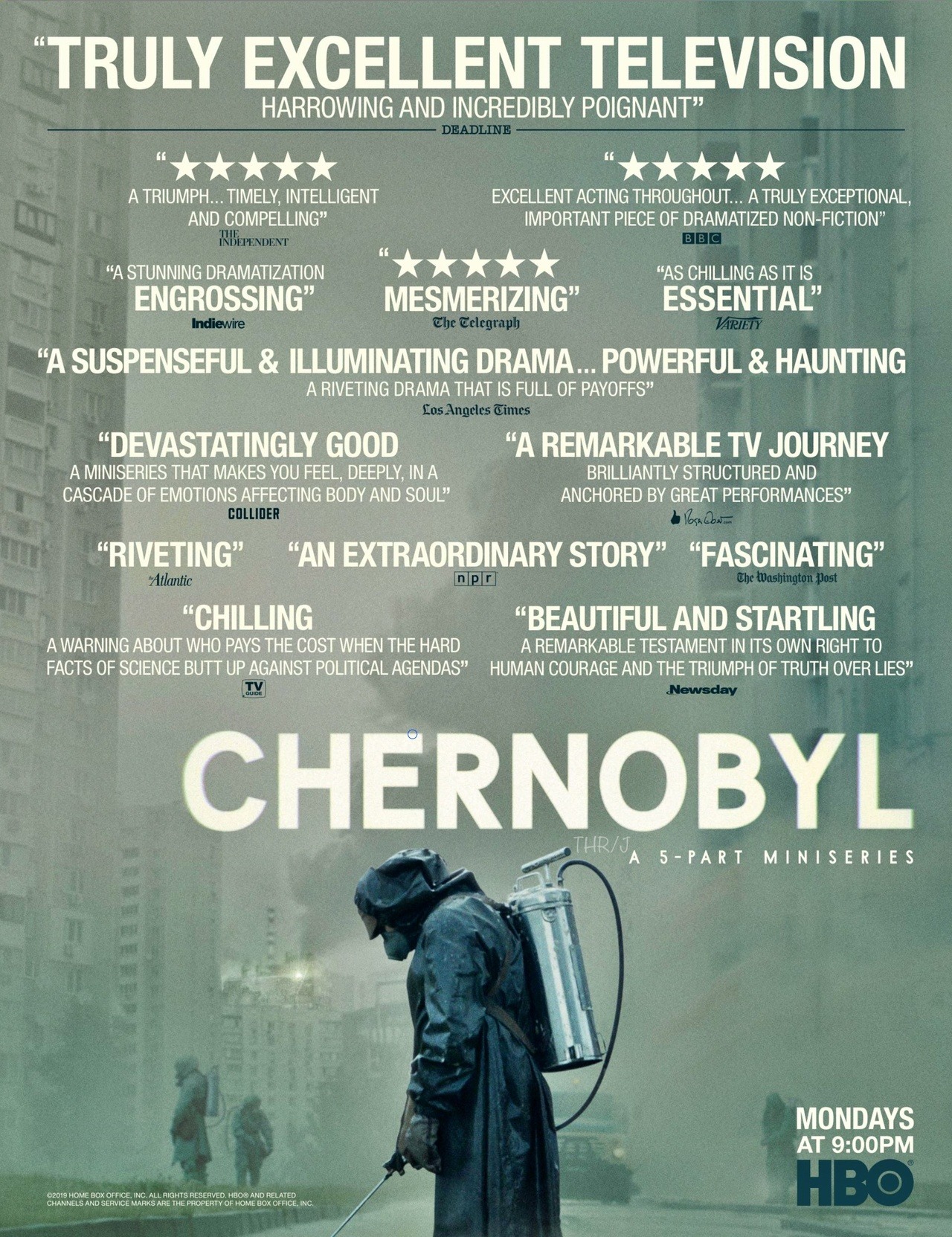
Anyone who lived through the 80’s would remember 1986 for the twin disasters of the Challenger space shuttle explosion and the Chernobyl nuclear accident, which took place within 4 months of each other. The Challenger explosion was seen again and again on TV and was therefore much more dramatic, the twin forks of smoke from the still-firing boosters seared into our memories. Chernobyl took place behind the iron curtain which kept a tight rein on information and pictures shared with the outside world. By the time the Soviet Union had dissolved five years later, the reactor was already entombed in concrete and there was nothing to see.
HBO and SkyUK ’s new 5-part mini-series Chernobyl, chronicles the hours leading up to the explosion (via flashback scenes in the final episode) and more importantly, the valiant efforts of a wide group of scientists, firemen, soldiers, engineers and even coal miners to contain and mitigate the radioactivity in the hours, days, weeks and months following the accident.
The mini-series is created by American screenwriter, Craig Mazin, perhaps the least likely person one would expect subject matter like this from, having previously written a couple of the Scary Movie spoofs and the two Hangover sequels! Director Johan Renck from Sweden is also a relative unknown; he has directed three episodes of Breaking Bad and one of The Walking Dead, but he has spent most of his career making music videos for the likes of Madonna, Kylie Minogue and David Bowie. This unlikely duo has created an instant classic, equal parts human drama and history lesson, delivering a commentary on the tragic consequences of human negligence and deceit by the State.
The scenes detailing the immediate aftermath of the explosion in the No.4 reactor at the Chernobyl Power Plant play out like a sci-fi horror film. The radiation causes skin burn and internal organ collapse for the initial responders and honestly, the only thing missing from these scenes is a monster or a supernatural creature. Likewise, the view of the burning station and the blue shaft of sparkling Cherenkov radiation shooting straight up into the night sky look like it could have been a scene from an Avengers movie. In later scenes, seeing machines breakdown instantly in the vicinity of the reactor core truly brings home the destructive power of radioactivity and makes one wonder at the arrogance of humankind in believing we can successfully tame this kind of lethal energy.

The shock and initial denial of the plant supervisors and bureaucrats is difficult to comprehend, until one remembers that this was the Soviet Union of 1986, locked in an ideological war with the West and with the inability to admit failure of any kind – even to oneself – ingrained deeply in the psyche of both bosses and subordinates.
The three main characters in the story are Boris Shcherbina (played by Stellan Skarsgård), the deputy chairman of the Council of Ministers, chemist Valery Legasov (played by Jared Harris) and a fictitious scientist Ulana Khomyuk (played by Emily Watson), whose character was created to represent the many scientists who helped out in the wake of the disaster. I think all three will receive acting nominations at the next Golden Globes and Emmys. Besides these three, we also see the points of view of many other characters, such as the wife of a first responder fireman, and these ordinary people bring the true impact of the human disaster to life for the viewers. There is a heart-breaking sub-plot involving actors Fares Fares (watch him in the Arabic thriller The Nile Hilton Incident) and Barry Keoghan (Dunkirk) playing soldiers who are tasked to put down pets who have been abandoned in the exclusion zone and now contaminated with radioactivity…almost unwatchable.
The final episode uses the mechanic of a courtroom drama – specifically the prosecution of the officials who were in charge of the power plant – to piece together the series of unfortunate events which culminated in the explosion on the night of 26th April 1986, which at one point risked the lives of 50 million inhabitants across Belarus and Ukraine.
It is generally acknowledged that the Chernobyl disaster and the realization of how far the Soviet Union had fallen behind the West in technological prowess was a key factor in Mikhail Gorbachev’s decision to double down on the path of perestroika and glasnost, which eventually led to the dissolution of the USSR in 1991. That makes the events depicted take on even more significance.